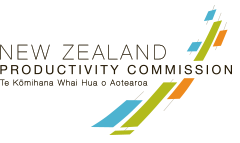2.3.1 Online survey findings
There were 146 respondents to the online survey out of 1231 invitations.11 Survey respondents had the following characteristics:
- 77% were involved directly with the Inquiry, either attending an event during the Inquiry, speaking to one of the Inquiry team or commissioners, or making a submission on the Terms of Reference or the Interim Report;
- 32% were from the public sector (central or local government); 18% were from the charitable/social sector; the remainder included business, researchers/academics/think tanks, and private individuals;
- 2% were from an iwi or Māori organisation; and
- 66% had never engaged with the Commission on previous inquiries.
2.3.2 Submissions on Interim Report
A themed analysis of submissions on the Interim Report was invited and published, which was a new initiative for the Commission. This included thematic analysis of 68 submissions across a range of perspectives and sectors, which informed the focus and detail level of the Final Report. The full report is available on the Commission website.12
Linked to the submission report were further insights into the feedback gathered through wānanga and a talanoa session, to engage more directly with Māori and Pasifika communities.13
2.3.3 Media and engagement report
An internal report covering engagement and media during the Final Report launch period also informed this evaluation. This report was part of ongoing media monitoring internally at the Commission and is not a public-facing document. The report summary demonstrates the breadth of launch-related engagement, and includes findings such as:
- 65 people attended the online officials’ briefing;
- 169 people attended the launch event (63 in person, 106 via livestream);
- There were 43 views of the online recording of the launch event;
- 68 people attended the post-launch webinar (with 87 views of the recording of this event); and
- The report received 44 mentions and/or articles covering the inquiry.
